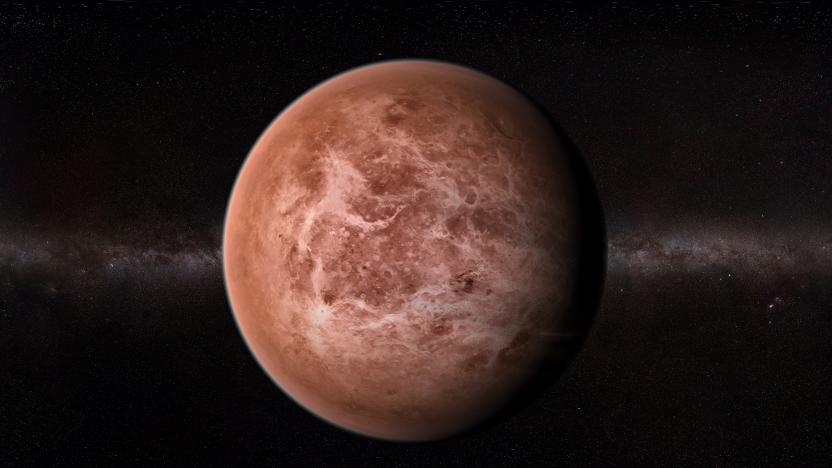astronomers
Latest

Astronomers detect possible signs of life in Venus's atmosphere
Some astronomers believe phosphine detected on Venus was produced by living microorganisms.

Astronomers observe the brightest supernova on record
In 2016, astronomers spotted the brightest supernova ever observed. They watched as the supernova, named SN2016aps, continued to emit radiation for more than 1,000 days.

Astronomers believe the young Milky Way once swallowed a dwarf galaxy
Astronomers believe they've mapped an important sequence of events that shaped our galaxy 10 billion years ago. In a paper published in Nature Astronomy today, researchers from the Instituto de Astrofisica de Canarias (IAC) share their findings that a dwarf galaxy, Gaia-Enceladus, once collided and merged with the early Milky Way. Their discovery offers a new understanding of how the Milky Way formed.

New super-Earth detected, 'best candidate' for supporting life
A new potentially life-bearing "super-Earth" has been discovered orbiting a relatively nearby star. Described as the "best candidate" for supporting liquid water -- and therefore life -- the planet (GJ 667Cc) is believed to be about 4.5 times the size of Earth. The parent star (GJ 667C) is 22 light years away, and this is the second potentially Earth-like rock scientists have discovered orbiting the M-class dwarf. With a 28.15 day cycle, it's calculated to receive 90 percent as much light as Earth, and much of that is infrared (meaning the actual energy delivered is about equal) -- crucially hinting at similar temperatures and favorable conditions. Not enough is known about the atmosphere right now to fully nail the water prospects, but it's still our best hope of discovering life as we (don't) know it yet.

Volunteer scientists discover two possible planets, tell NASA it missed a spot
Proving it's not all about edu-mah-cation, a group of casual star-gazers has stumbled upon what might well be a pair of new planets. Following on from gamers' success with complicated medical puzzles, an army of 40,000 online volunteer astronomy nerds signed up to the Planet Hunters project to help mine through NASA data. One of the possible planets they discovered is roughly two and a half times the size of Earth, while the other a whopping eight times bigger than this revolving ball of blue and green we call home. The project uses data from NASA's Kepler telescope, which registers fluctuations in brightness as objects pass in front of distant stars -- a setup that's helped scientists discover 1,235 potential alien planets in its first four months. Obviously, though, the technology isn't perfect, which is where the project's muggle volunteers (assisted by Oxford and University of Chicago researchers) come in. They've been combing through NASA's readings and are now sifting through the next 90 days of Kepler observations. [Image credit: NASA]

Russian eclipse enthusiasts launch floating globe to shoot the moon
That globe, which launched June 15th, was attached to a weather balloon, and apparently carried with it a GPS / GSM tracker, two GoPro cameras, two Canon cameras, and one Buzz Lightyear figurine. The mission? Capture last week's lunar eclipse. Lucky for us, the mission was successful and both the cartoon astronaut and the accompanying film were successfully recovered. The resulting photographs are quite stunning, but you don't have to take our word for it. If you missed Google's live stream, you can catch up with Buzz and the team at the source link below.

Astronomers snap black hole murder in graphic detail (video)
We tend to imagine a black hole sucking everything around it straight into oblivion. The truth, however, is even more gruesome. Astronomers have just captured an ultra hi-res image of our neighbouring galaxy, Centaurus A, and it helps to reveal what actually happens. Matter is yanked helplessly towards a black hole at the galaxy's core, but it refuses to die quietly. For some unknown reason, it erupts as it falls, spewing out vast plumes of particles -- like blood from celestial murder. These death throes emit radio waves, allowing us to witness them using radio telescopes even though we are 12 million light-years away. If only we were closer; if only we could intervene. Alas, all we can do is watch the video after the break and hit the source links for a fuller explanation -- though, admittedly, none of those sound like awful options.




